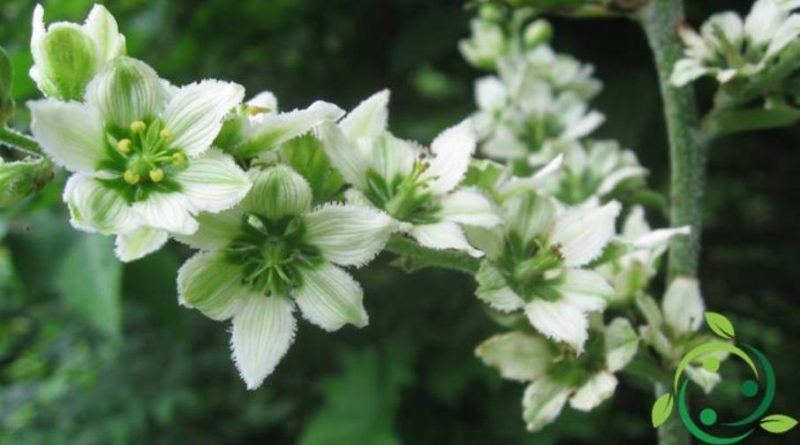Properties and toxicity of the common Veratro
Properties and toxicity of the common Veratro
The common veratrum (Veratrum album L.) is a toxic rhizomatous herbaceous species belonging to the Liliaceae family. It is a perennial plant up to 150 cm high, with cylindrical rhizome, which grows in the mountains at high altitude, with alternate leaves and dark green color. The flowers are formed by 6 petals and grouped in terminal inflorescences branched in their lower half. The whole plant is poisonous: rhizome and root in particular (even dry). The rhizome is particularly poisonous and can be confused with the gentian lutea but it is a large taproot and the plant has opposite leaves.
It is often known as the White Hellebore, which is actually wrong because it does not belong to the Ranuncolaceae family but to the Liliacee family; it was used in ancient times as a universal panacea.
Remember that this is a toxic plant for both humans and animals. Ingestion of the veratro in pregnant cows can cause alopecia and serious bone defects in the calf such as cleft palate.
From this plant it is possible to prepare a mother tincture starting from the fresh root before flowering. It contains a set of alkaloids known as veratrin, among which the most important is the gervin which has a bradycarding effect.
The common veratro is indicated to treat especially the diarrhea due to food poisoning, characterized by very abundant, watery discharges, with rapid dehydration of the subject that feels intense cold and tendency to collapse. Useful remedies are also found in dysmenorrhea, when menstrual cramps cause a lipotymic state, accompanied by vomiting, profuse diarrhea and cold sweats. Finally it can be used in some episodes of spasmophilia, characterized by cramps and contractures, symptoms accompanied by sensation of intense cold, tendency to collapse, sometimes with the appearance of diarrhea.
In general it is therefore indicated for therapeutic actions in favor of:
– Digestive system: coleriform disorders characterized by vomiting, diarrhea, cold sweating and lipotymie;
– Nervous system: tetaniform type muscle cramps and manic and delirious manifestations.

